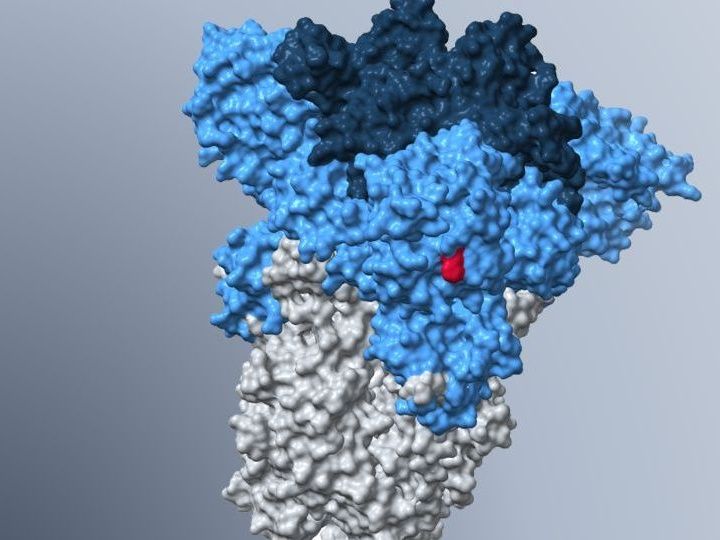Omicron subvariant infects more efficient
Future subvariants, however, could again become dangerous for at-risk patients.
Advertisement
Omicron-derived virus variants are currently responsible for most SARS-CoV-2 infections worldwide. Compared to earlier virus variants, Omikron causes severe disease less frequently. According to current knowledge, one important reason for this is that Omikron infects lung cells less effectively and therefore causes pneumonia less frequently. However, an international team, including scientists from the German Primate Center - Leibniz Institute for Primate Research, has now identified a mutation in the spike protein of the Omikron subvariant BA.5 that enables the virus to efficiently infect lung cells again. The study shows that in the future, omicron subvariants may emerge that could again effectively infect lung cells, causing severe disease progression in high-risk patients and people with insufficient immunity.

MARKUS HOFFMANN
Omicron Subvariants
Omicron subvariants BA.1 and BA.2 dominated the COVID-19 pandemic in the first half of 2022, and these subvariants have in common that they infect lung cells much more poorly than previously circulating variants such as the delta variant. Until now, it was unclear whether the omicron subvariant BA.5, which displaced other omicron subvariants in the fall of 2022, was also poor at infecting lung cells. A team led by Markus Hoffmann and Stefan Pöhlmann of the German Primate Center has now shown that BA.5 infects lung cells much more efficiently than earlier omicron subvariants due to a mutation in the spike protein.
Mutation in the spike protein
The researchers found that the spike protein of the omicron subvariant BA.5 is cleaved to a greater extent than in earlier subvariants. In addition, the spike protein of BA.5 can more efficiently mediate entry of the virus into lung cells and fuse lung cells more effectively. To study how the virus enters lung cells, the researchers used so-called "pseudo-viruses," a safe model system of the real pathogen. Markus Hoffmann, first author of the study, explains, "We found that BA.5 acquired a mutation that allows the virus to enter lung cells better than the previously dominant omicron subvariants. Thus, the ongoing evolution of omicron subvariants may also produce viruses that can again spread effectively in the lower respiratory tract and potentially cause severe disease progression, at least in individuals without effective immune protection." The main responsibility for these altered properties of Omikron-BA.5 lies with a key mutation known as "H69Δ/V70Δ."
Confirmation on real virus
To confirm the results with real viruses, Christian Drosten's team conducted further experiments at the Virology Department of Charité - Berlin University Medicine. The researchers showed that real viruses of the BA.5 strain also efficiently infect lung cells, thus confirming the Göttingen results. To determine whether Omikron BA.5 also infects lung cells in living organisms, researchers at the University of Iowa in the U.S. compared the lungs of mice infected with BA.5 with those that received other Omikron subvariants. They found that BA.5 replicated up to 1000 times more efficiently in the lungs of mice than previous omicron subvariants. In addition, experiments with ferrets at the Friedrich Loeffler Institute in Greifswald - Insel Riems, Germany, found that the BA.5 subvariant spreads better in the upper airways than earlier variants. "All together, this suggests that BA.5 is highly contagious, similar to other omicron subvariants, but has additionally regained the ability to efficiently infect lung cells," said Stefan Pöhlmann, head of the Department of Infection Biology at the German Primate Center. "The further evolution of omicron subvariants should therefore be followed closely in order to quickly identify variants with potentially increased risk potential."
Note: This article has been translated using a computer system without human intervention. LUMITOS offers these automatic translations to present a wider range of current news. Since this article has been translated with automatic translation, it is possible that it contains errors in vocabulary, syntax or grammar. The original article in German can be found here.























































